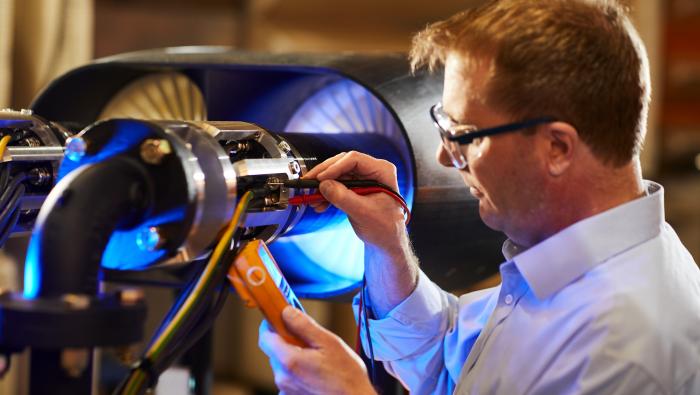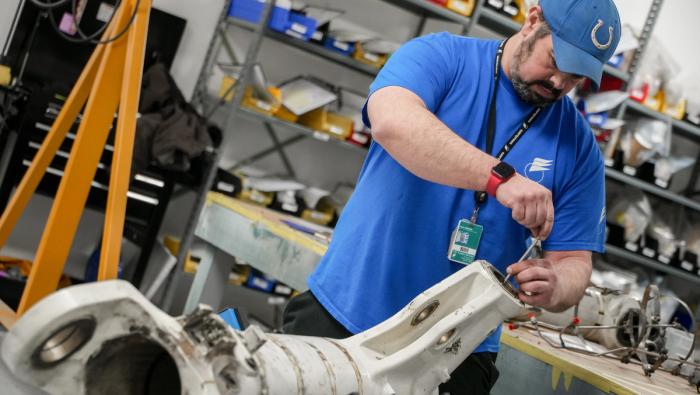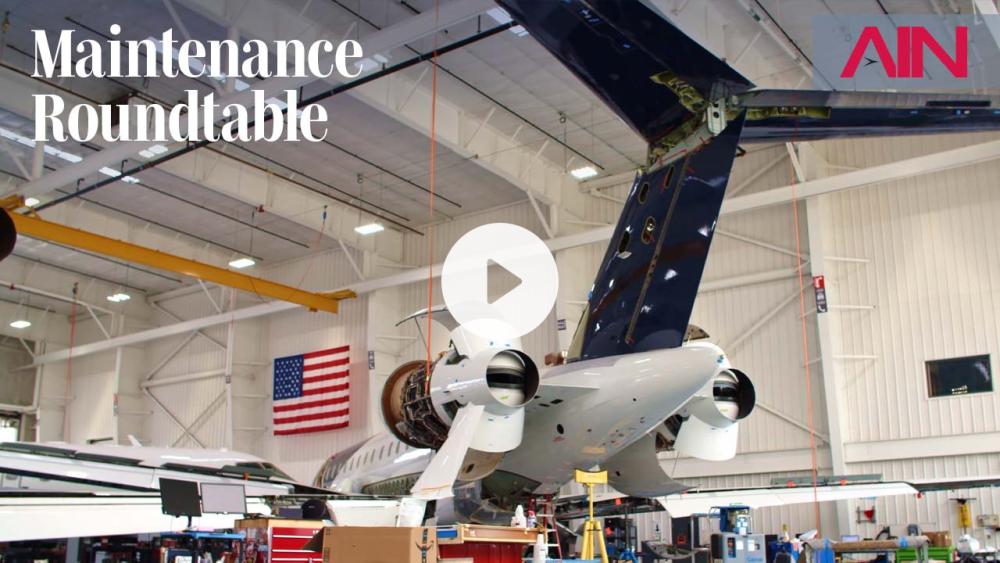The existential threat to the air transport industry if it fails to achieve net-zero carbon emissions and the mounting dangers from military conflicts around the world were hard to ignore at the Farnborough Airshow this year.
Threats faced by the aerospace and defense industries beg for answers in the form of technology, technology, and yet more technology. This year the show has proved light on major product reveals, but the event has been packed with tidings of technological progress for the next decade and beyond.
|
A new generation of flagships—the Gulfstream G700, Bombardier Global 8000, and Dassault Falcon 6X—are taking command of the world’s ultra-long-range business jet fleets. They are all vying for claim to the greatest range, tallest and widest cabin, maximum Mmo, lowest cabin altitude, and other superlatives.
With the three new business jets coming to market within a short time frame (the Falcon 6X in November, the G700 in April, and the Global 8000 slated for second-half 2025), bragging rights can be fleeting.
|
Global Jet Capital (GJC), a new source of leasing and lending options for business jet transactions, has started operations. The company launched in October 2014 with an initial $2 billion fund with the backing of three investment firms: GSO Capital Partners, The Carlyle Group, and AE Industrial Partners.
The Boca Raton, Florida-based company is offering a range of operating and interim leases, finance leases and mortgage loans, progress payments, and mezzanine financing (a mix of debt and equity financing) for both new and previously owned business jets. Its target market is aircraft valued at $30 million and higher, including pre-owned aircraft around three to five years old.
|
Sponsor Content: C&L Aviation Group
Has managing all your ERJ landing gear overhauls got you feeling overwhelmed? A third-party provider can assist with the entire process, but is outsourcing right for you? In this resource, C&L Aviation Group explains the benefits of working with a provider for all your ERJ landing gear overhaul management needs.
|
Due to their ability to land on short unpaved fields and fly distances of between 900 and 1,900 nm, turboprop singles never seem to go out of fashion. And over the last two decades just about all the major manufacturers have incorporated private jet amenities into these aircraft—glass panels, digital engine controls, and more comfortable cabins.
Thanks to continuous improvements in engine technology, turboprop singles flown single pilot are as safe and reliable as their twin-engine cousins—and often deliver comparable performance in terms of range, speed, and cabin dimensions—but with considerably lower fuel burn. The right one for you depends upon your mission.
|
Garmin once again reached the top ranking in the flight deck avionics category in the 2024 AIN Avionics Product Support Survey and also ranked first in the airborne connectivity category, finishing with composite scores of 9.0 and 9.1, respectively. Holding the highest ranking in flight deck avionics for the past few decades, the Olathe, Kansas-based supplier secured at least a 9.0 rating in five of the eight categories measured both in the flight deck avionics and airborne connectivity categories, including a 9.3 in overall reliability in both.
Collins Aerospace placed second behind Garmin in flight deck avionics with an 8.6 rating, improving by 0.5 points in its overall average from 2023. In airborne connectivity, Satcom Direct maintained its rating from 2023 of 8.6, finishing second in this category.
|
Markedly lower costs and a potentially vast domestic market would appear to support the case that China is fertile territory for cultivating the advanced air mobility (AAM) sector. According to Louis Liu, the founder and CEO of Beijing-based consultancy DAP Technologies, strong political will from the highest levels of China’s government to achieve growth from the so-called “low-altitude economy” is also bolstering prospects for the country’s eVTOL pioneers.
It is now almost a year since EHang achieved a world first by securing type certification for its EH216-S eVTOL from China's CAAC. It has since earned a production certificate, allowing it to increase manufacturing rates of the two-seat autonomous vehicle.
|
Boeing has agreed to pay Embraer $150 million to settle a long-running dispute over the circumstances in which the U.S. aerospace group backed out of a $4.2 billion deal to buy an 80% stake in the Brazilian airframer’s commercial airliner business. In a Securities and Exchange Commission filing late on Monday, Embraer confirmed the resolution of an arbitration process it initiated on April 27, 2020.
Embraer and Boeing announced the planned master transaction agreement in July 2018. In October 2019, the European Commission launched an anti-trust investigation into the takeover, prompting a delay that spilled over into the start of the Covid pandemic in 2020.
|
Laying the Groundwork for Aviation's Mx Demand
Business aircraft maintenance shops have found their hangars filled and backlogs growing. Capacity became an issue for many reasons: too much work all at once, a supply chain that still has not recovered from disruptions of the pandemic, and a workforce shortage. Adding to that has been the growth in the number of larger aircraft and more extensive aircraft projects. AIN brought together thought leaders to discuss the quandary maintenance shops are facing in light of this, what they are doing to mitigate these issues, and how the future is shaping up for the sector.
|
Top Stories This Week on AINonline
|
AINalerts is a publication of AIN Media Group, 214 Franklin Avenue, Midland Park, New Jersey. Copyright 2024. All rights reserved.
Reproduction in whole or in part without permission is strictly prohibited.
|
|














